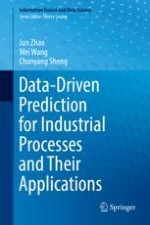2018 | OriginalPaper | Buchkapitel
2. Data Preprocessing Techniques
verfasst von : Jun Zhao, Wei Wang, Chunyang Sheng
Erschienen in: Data-Driven Prediction for Industrial Processes and Their Applications
Aktivieren Sie unsere intelligente Suche, um passende Fachinhalte oder Patente zu finden.
Wählen Sie Textabschnitte aus um mit Künstlicher Intelligenz passenden Patente zu finden. powered by
Markieren Sie Textabschnitte, um KI-gestützt weitere passende Inhalte zu finden. powered by
